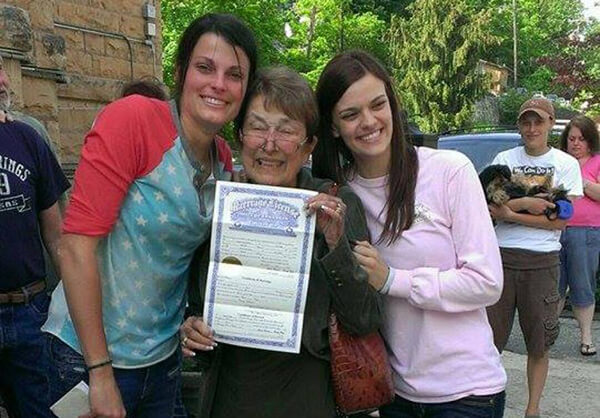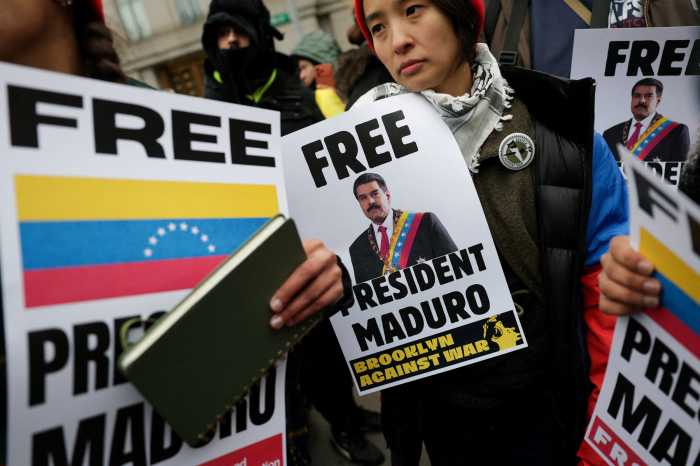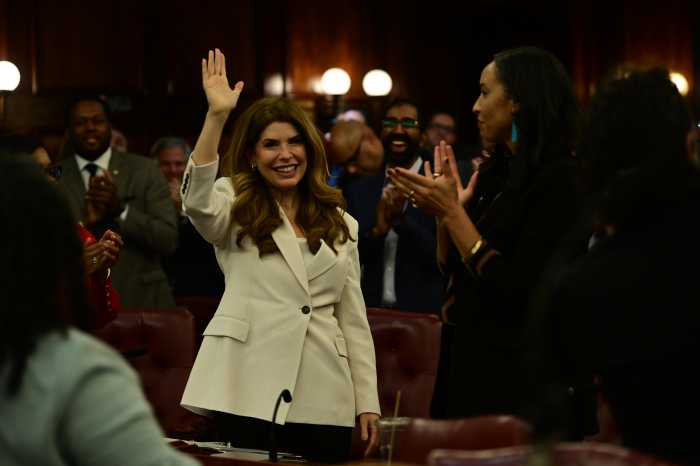ILLUSTRATION OF EDIE WINDSOR BY MICHAEL SHIREY
BY PAUL SCHINDLER | Four years after launching federal litigation against Proposition 8, Chad Griffin, now president of the Human Rights Campaign, has reason to be happy. His hope of settling the question of a federal constitutional right to same-sex marriage fell short, for now, but marriage equality has been restored to California and, due to victory in the DOMA case, the US government will now recognize legal marriages by gay and lesbian couples.
It is significant, then, that just 12 days after the two welcome Supreme Court rulings, Griffin used the start of a five-day trip this week to issue something of a dire warning: “that there are now ‘Two Americas’ when it comes to LGBT equality.” As he departed Washington en route to Virginia, North Carolina, Mississippi, and Arkansas, those words were certainly appropriate to the itinerary, if not in fact an understatement.
“In one America, full legal equality gets nearer every day,” an HRC release stated. “But in the other, even the most basic protections are still non-existent.”
The immediate impulse is to consider Griffin’s observation in the context of the marriage fight. Thirteen states now have marriage equality, another six offer civil unions or their equivalents, and one — Wisconsin — has a more modest partnership law. That’s forty percent of the states, but those 20 states show a very distinctive geographic pattern.
Nine of the marriage equality states hug the Eastern Seaboard — the six in New England, New York, Delaware, and Maryland. Adding New Jersey, which has a civil union law and would have marriage had Chris Christie not used his veto pen last year, you see a stretch of equality or near-equality from Maine to the nation’s capital. On the West Coast, there is gay marriage in Washington and California, and civil union-style laws in neighboring Oregon and Nevada. And the Upper Midwestern marriage oases of Minnesota and Iowa border Illinois, which has civil unions and strong momentum toward full marriage.
The thirty states that offer no relationship recognition dominate much of the rest of the Midwest, Great Plains, Mountain West, and the entire South, from Virginia to Texas. Of those 30, 25 have prohibitions against same-sex marriage — and often other forms of partner recognition, as well — written into their constitutions, a hurdle that imposes special burdens on advocates seeking to deliver equality across the nation.
In the wake of the Supreme Court victories last month, groups from HRC to Freedom to Marry to the community’s leading legal advocacy organizations offered game plans for advancing the marriage fight — in state legislatures and state and federal courts. Griffin boldly predicted nationwide victory on marriage equality within five years.
Freedom to Marry laid out a more modest goal — winning equal marriage rights in up to 13 additional states by 2016. Hawaii, Illinois, New Jersey, and Oregon are the lowest hanging fruit in its estimation, but to achieve even 10 of its targets, state constitutional amendments will have to be undone one by one, unless there is a sweeping nationwide victory in the federal courts. And the community will have to begin winning in states where gains to date have been modest to nil — places like Michigan, North Carolina, Ohio, and Virginia. And we’re not even talking yet about Alabama, Mississippi, Kentucky, or Texas. But at least advocacy groups recognize that expanding the map is an urgent necessity.
Acknowledging that necessity couldn’t have come soon enough. Because relationship recognition and marriage aren’t the most important needs among LGBT Americans. In 29 states, queer people enjoy no statewide protections against discrimination of any type — in employment, housing, or anything else.
The 29 states that offer no protections against discrimination match up almost identically with the 30 that give same-sex couples no relationship recognition. New Mexico is the only exception — it has a nondiscrimination law with protections based on sexual orientation and gender identity, but currently offers no partnership rights. Like Illinois, however, it does recognize out-of-state gay marriages and is considered a top target for near-term progress.
To be sure, within each of the two groupings of states, anomalies persist. New York enacted gay marriage two years ago, but has stalled for a decade on transgender rights. New Jersey has historically been way out front on LGBT rights, but lacks equal marriage. But these disparities between like states are overwhelmed by the differences between the blues and the reds. And we are not talking here about whether it’s the Democrats or the Republicans who prevail, but rather whether we are free in a particular state or not.
And so, the LGBT rights project cannot succeed without a dramatic expansion of the map. And in 29 states, people cannot wait. Which is why Congress must move on the federal Employment Non-Discrimination Act — as a very modest first step. And why President Barack Obama cannot simply blame Speaker John Boehner for not allowing ENDA to advance. He must use the power he already has to issue an executive order barring discrimination by any business seeking contracts with the federal government. The president must act now, because when it comes to discrimination surely it is unacceptable to Barack Obama that he preside over two Americas.




































